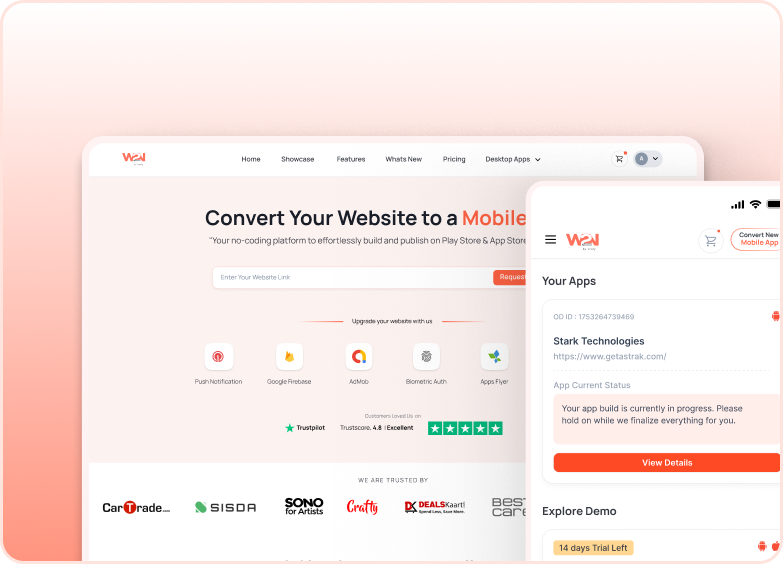App Settings for iOS
1. Status Bar Color
Set the color of the status bar. The status bar is the horizontal bar at the top of the screen that displays device information such as time, battery status, and notifications. Use hexadecimal color codes to specify the color. For example, #FFFFFF represents white.

2. Screen Orientation
Screen Orientation controls how the app layout appears— Portrait, Landscape, or Both. This feature improves usability across different screen sizes.
- Portrait: Set the app screen to portrait orientation, allowing users to view it only vertically.
- Landscape: Set the app screen to landscape orientation, allowing users to view it only horizontally.
- Both(Portrait & Landscape): Allow users to view the app in both portrait(vertically) and landscape(horizontally) orientations.

3. Pull to Refresh
Enable this option to allow users to pull down on the screen manually to refresh the content displayed in the app. This is commonly used in apps that display dynamic content, such as news feeds or social media timelines.

4. Show Loader on Page Navigation
Enable this option to display a loading indicator (loader) when users navigate between pages within the app. This provides visual feedback to users that the app is fetching or processing data.

5. Show No Internet Screen
Enable this option to display a screen indicating no internet connection when the device is offline. This helps users understand why certain app features may not be available and prompts them to check their internet connection.

6. Enable Full Screen
Enable this option to display the app in full-screen mode, hiding the status and navigation bars. This provides an immersive experience for users by maximizing the available screen space.

7. Show Strip on Safe Area
This setting allows you to show a strip on the safe area of devices with a bottom notch. Enabling this ensures that your app's content is not obstructed by the device's notch, maintaining a consistent user experience across different devices.

Enabling this feature has an additional option of Safe Area Color, which customizes the color of the safe area, which is the area of the screen where content is guaranteed to be visible and not obstructed by device elements such as notches or rounded corners. Use a hexadecimal color code to define the color.

8. Do you want an app for iPads as well?
Specify whether you want the app to be available for iPads in addition to iPhones. Enable this option to expand your app’s compatibility to iPads for a smooth user experience on all iOS devices.

9. Do you want to keep the screen on always?
Enabling this option keeps the device screen on at all times, preventing it from automatically turning off. This can be useful for apps that require continuous display, such as in-vehicle display apps, kiosk apps, or demo apps.

10. Disable the Scroll Bounce Effect
Disable the screen from bouncing when users scroll past the content’s edge. In other words, it prevents the content from bouncing when reaching the top or bottom. It provides controlled scrolling within the app.





